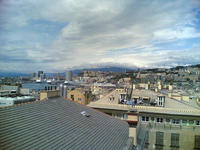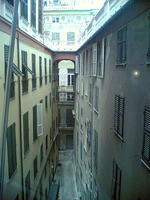| Site number: | 1211 |
|
| Type of site: | Cultural | |
| Date: | 16-17th century | |
| Date of Inscription: | 2006 | |
| Location: | Europe, Italy, Liguria Region, Genoa Province | |
| Description: | Representing Europe’s first case of an urban development project with a unitary framework are the Strade Nuove and the system of the Palazzi dei Rolli, in the historic centre of Genoa (late 16th and early 17th centuries); the plans were expressly divided by a public authority and a particular system of ‘public lodging’, rooted in legislation. The wealthiest and most powerful aristocratic families built the Rolli palaces, which acted as their residences, at the peak of the Republic of Genoa’s financial and seafaring power. Along the so-called ‘new streets’ (Strade Nuove) lie the site’s collection of Renaissance and Baroque palaces. The late 16th century grand residence palaces that were erected on the Strada Nuova (now known as the Via Garibaldi), shaped the nobility’s neighborhood, who, under the 1528 constitution, had assumed the Republic’s government. Palaces commonly rise three or four stories in height and embrace magnificent open staircases, courtyards, and garden-facing loggias, placed at various levels in a fairly tight space. The profound influence of this urban design model can be seen through its recurring reference in Italian and European literature over the subsequent decades. Presenting an astonishing variety of different solutions, the palazzo achieved universal value in adjusting to the individual characteristics of the site as well as to the necessities of a specific social and economic organization. For visits of state they present a unique network of public hospitality houses, as directed by the Senate in 1576. As the owners were obliged to host state visits, thus the palazzi engrossed famous artists and travelers with knowledge of a novel architectural model and a residential culture; a noteworthy example is a drawing collection by Pieter Paul Rubens.
The influence of this urban design model is evidenced by Italian and European literature over the following decades. The palazzi offer an extraordinary variety of different solutions, achieving universal value in adapting to the particular characteristics of the site and to the requirements of a specific social and economic organization. They also offer an original example of a network of public hospitality houses for visits of state, as decreed by the Senate in 1576. The owners of these palazzi were obliged to host state visits, thus contributing to the dissemination of knowledge of an architectural model and a residential culture which attracted famous artists and travellers, and of which a significant example is a collection of drawings by Pieter Paul Rubens. --WHMNet paraphrase from the description at WHC Site, where additional information is available. |
|
| Source: | http://whc.unesco.org/en/list/1211 | |
| Reference: | 1. UNESCO World Heritage Center, Site Page. | |




















